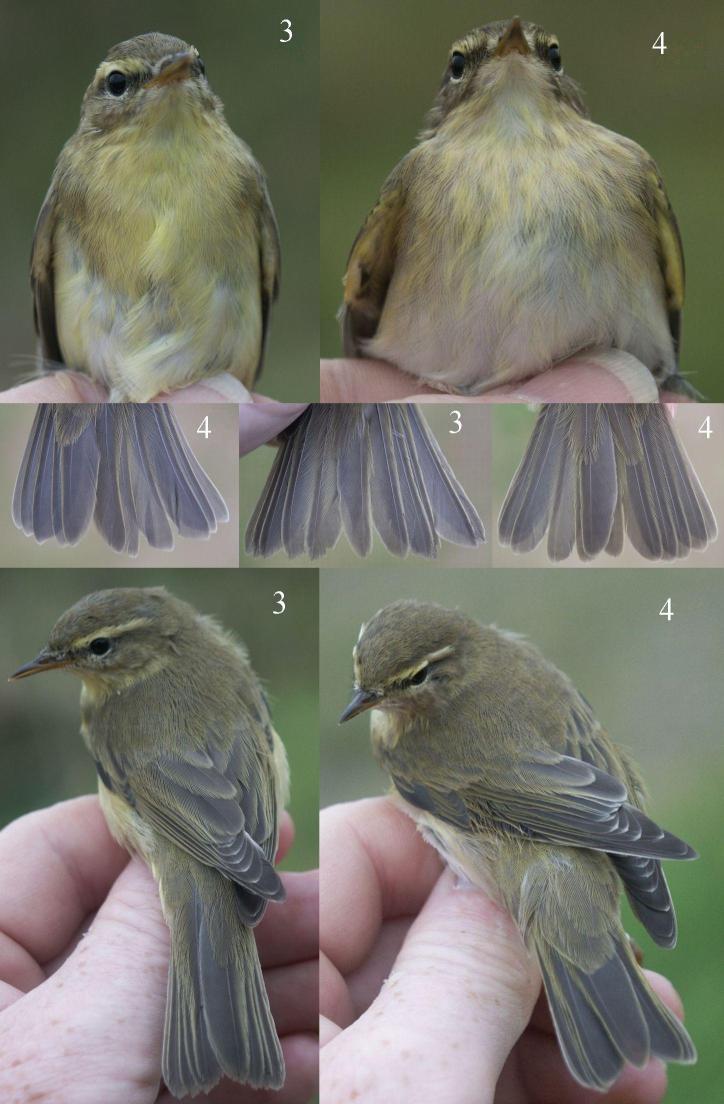Ageing Willow Warblers (12 August 2003)
I recently showed a set of adult Willow Warblers Phylloscopus trochilus near to the end of their full moult. Today (12 August 2003) I caught two adults (Euring age 4), both of which had finished moulting, and a juvenile (Euring age 3). This montage shows most of the features useful for ageing them from now until they leave us (all too soon!).

The tails of adults are typically broad, rounded and with little or no abrasion; juvenile tails are usually narrower, more pointed and usually with bits nicked out of them that some people call 'castellations'. These photos show the classical patterns. The two adult tails also differ, the feathers of the one on the left being quite square while the feathers in the one on the right are rounded. But the tails of both adults are very fresh and obviously different from the juvenile.
The underparts of juveniles are usually bright yellow, especially on the breast; in an adult, the underparts tend to be much paler yellow and flecked with white throughout. On these birds, the adult has much brighter yellow underwing coverts, but I haven't noticed if this is a consistent ageing character. They do raise their wings somewhat in display, of course, but this underwing colouration cannot be of any use in distinguishing the ages of birds in territorial display and mate selection since all ages of bird will have a full moult in winter and thus come back next spring looking the same as each other.
The back view of the same two birds shows that the adult has somewhat 'cleaner' lines to its plumage, with none of the buffish fringing on the tertials that the juvenile has. The difference in the tail feathers is obvious.
I don't think there is an sex difference in any of these characteristics, but as it happens all three of these birds were males, identified as such by their long wings.
David Norman.